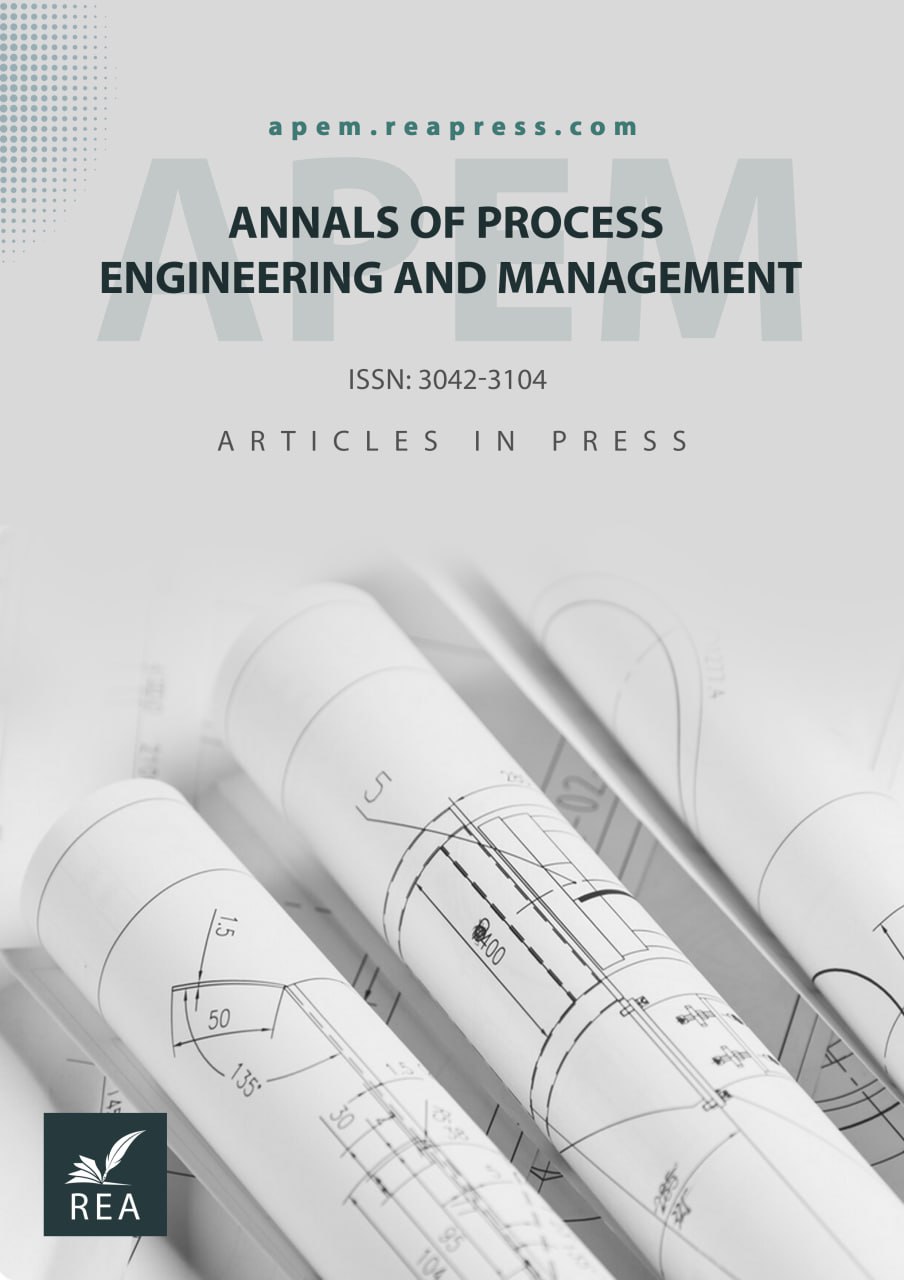Optimizing the Cyber Crisis Management Process with an Artificial Intelligence Approach in Iranian Banks
Abstract
Given the increasing frequency and complexity of cyber-attacks in recent years, leveraging Artificial Intelligence (AI) to enhance Cyber Crisis Management (CCM) has become a necessity. According to various cybersecurity reports, banking malware and financial fraud have experienced significant growth over the past decades. In light of the escalating sophistication of cyber threats and the rapid emergence of new attack vectors, traditional crisis management methods are no longer sufficient to meet the security demands of Iranian banking institutions. In this research, we propose an optimized AI-driven framework for CCM. In our proposed approach, AI is employed in the pre-crisis phase to predict complex cyber threats, allowing for the rapid deployment of defensive measures that minimize the likelihood of a crisis. During the crisis itself, AI enhances the Incident Response (IR) process through advanced automated algorithms capable of analyzing vast volumes of data in minimal time. The integration of AI into the CCM process facilitates faster response times, process automation, reduction of human error, real-time analysis of high-volume and complex datasets, and enables continuous learning and adaptive improvement.
Keywords:
Artificial intelligence, Cyber crisis management, Electronic banking, Cybersecurity, Threat detection, Incident response, Vulnerability assessmentReferences
- [1] Urbinati, A., Chiaroni, D., Chiesa, V., & Frattini, F. (2020). The role of digital technologies in open innovation processes: an exploratory multiple case study analysis. R&D management, 50(1), 136–160. https://doi.org/10.1111/radm.12313
- [2] Abdou, H. A., English, J., & Adewunmi, P. O. (2014). An investigation of risk management practices in electronic banking: The case of the UK banks. Banks & bank systems, 9(3), 19–31. https://b2n.ir/tj1485
- [3] Singh, A., & Gupta, B. B. (2022). Distributed denial-of-service (DDoS) attacks and defense mechanisms in various web-enabled computing platforms: Issues, challenges, and future research directions. International journal on semantic web and information systems (IJSWIS), 18(1), 1–43. https://doi.org/10.4018/IJSWIS.297143
- [4] Borode, A., & Olubambi, P. (2024). Optimisation of artificial intelligence models and response surface methodology for predicting viscosity and relative viscosity of GNP-alumina hybrid nanofluid: incorporating the effects of mixing ratio and temperature. The journal of supercomputing, 80(4), 4841–4869. https://doi.org/10.1007/s11227-023-05652-y
- [5] Dunsin, D., Ghanem, M. C., Ouazzane, K., & Vassilev, V. (2024). A comprehensive analysis of the role of artificial intelligence and machine learning in modern digital forensics and incident response. Forensic science international: Digital investigation, 48, 301675. https://doi.org/10.1016/j.fsidi.2023.301675
- [6] Alasmari, A. O. (2018). A review of the challenges of the crisis management during the cyber attacks. Journal of contemporary scientific research (ISSN (online) 2209-0142), 2(7), 1–9. https://b2n.ir/eq2687
- [7] Alghazo, J. M., Kazmi, Z., & Latif, G. (2017). Cyber security analysis of internet banking in emerging countries: user and bank perspectives. 2017 4th IEEE international conference on engineering technologies and applied sciences (ICETAS) (pp. 1–6). IEEE. https://doi.org/10.1109/ICETAS.2017.8277910
- [8] Al-Alawi, A. I., & Al-Bassam, M. S. A. (2020). The significance of cybersecurity system in helping managing risk in banking and financial sector. Journal of xidian university, 14(7), 1523–1536. https://doi.org/10.37896/jxu14.7/174
- [9] Chafjiri, M. B., & Mahmoudabadi, A. (2018). Developing a conceptual model for applying the principles of crisis management for risk reduction on electronic banking. American journal of computer science and technology, 1(1), 31–38. https://doi.org/10.11648/j.ajcst.20180101.15 %0D
- [10] Yamashita, R., Nishio, M., Do, R. K. G., & Togashi, K. (2018). Convolutional neural networks: an overview and application in radiology. Insights into imaging, 9(4), 611–629. https://doi.org/10.1007/s13244-018-0639-9
- [11] Salehi, P., Chalechale, A., & Taghizadeh, M. (2020). Generative adversarial networks (GANs): An overview of theoretical model, evaluation metrics, and recent developments. ArXiv Preprint ArXiv:2005.13178. https://doi.org/10.48550/arXiv.2005.13178
- [12] Aslan, Ö., Aktuğ, S. S., Ozkan-Okay, M., Yilmaz, A. A., & Akin, E. (2023). A comprehensive review of cyber security vulnerabilities, threats, attacks, and solutions. Electronics, 12(6), 1–42. https://doi.org/10.3390/electronics12061333
- [13] Khan, S., & Parkinson, S. (2018). Review into state of the art of vulnerability assessment using artificial intelligence. In Guide to vulnerability analysis for computer networks and systems: an artificial intelligence approach (pp. 3–32). Springer. https://doi.org/10.1007/978-3-319-92624-7_1
- [14] Xiaopeng, T., & Di, T. (2019). A distributed vulnerability scanning on machine learning. 2019 6th international conference on information science and control engineering (ICISCE) (pp. 32–35). IEEE computer society. https://doi.ieeecomputersociety.org/10.1109/ICISCE48695.2019.00016
- [15] Kumar, S., Gupta, U., Singh, A., & Singh, A. (2023). Artificial intelligence: Revolutionizing cyber security in the digital era. Journal of computers, mechanical and management, 2, 31–42. http://dx.doi.org/10.57159/gadl.jcmm.2.3.23064
- [16] Markevych, M., & Dawson, M. (2023). A review of enhancing intrusion detection systems for cybersecurity using artificial intelligence (AI) [presentation]. International conference knowledge-based organization (Vol. 29, pp. 30–37). http://dx.doi.org/10.2478/kbo-2023-0072
- [17] Kim, S., Hwang, C., & Lee, T. (2020). Anomaly based unknown intrusion detection in endpoint environments. Electronics, 9(6), 1–19. https://doi.org/10.3390/electronics9061022
- [18] Javed, S. H., Ahmad, M. Bin, Asif, M., Almotiri, S. H., Masood, K., & Ghamdi, M. A. Al. (2022). An intelligent system to detect advanced persistent threats in industrial internet of things (I-IoT). Electronics, 11(5), 1–25. https://doi.org/10.3390/electronics11050742
- [19] Schlette, D., Caselli, M., & Pernul, G. (2021). A comparative study on cyber threat intelligence: The security incident response perspective. IEEE communications surveys & tutorials, 23(4), 2525–2556. https://doi.org/10.1109/COMST.2021.3117338
- [20] Hassan, S. K., & Ibrahim, A. (2023). The role of artificial intelligence in cyber security and incident response. International journal for electronic crime investigation, 7(2), 49–72. https://doi.org/10.54692/ijeci.2023.0702154


